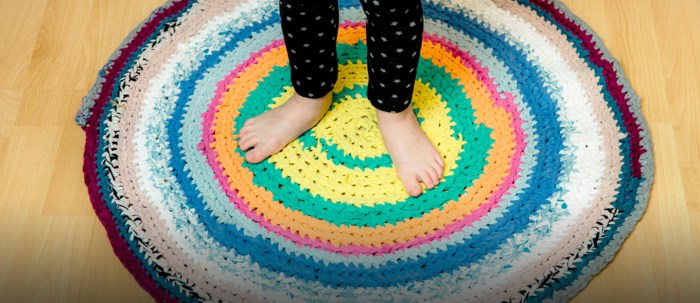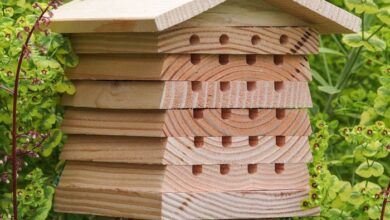
Paint your own outdoor rug – it’s a statement piece that can instantly transform your outdoor space into a personalized haven. Forget the boring, mass-produced rugs and unleash your creativity. This project is surprisingly easy and incredibly rewarding, allowing you to design a rug that perfectly reflects your style and personality.
Whether you’re a seasoned artist or a beginner, painting an outdoor rug is a fun and fulfilling way to express your artistic side.
Imagine stepping onto a custom-designed rug that showcases your favorite colors, patterns, and even your favorite quotes! You’ll be surprised at the wide range of materials, paints, and techniques available to create a truly unique rug. From simple geometric patterns to intricate floral designs, the possibilities are endless.
And the best part? You can personalize it to match your existing outdoor furniture, accent pieces, or even your favorite plants.
Introduction to Outdoor Rugs
Outdoor rugs are a fantastic way to enhance the ambiance and functionality of your outdoor space. They can transform a simple patio, deck, or balcony into a cozy and inviting area for relaxation, dining, or entertaining.
Purpose and Benefits of Outdoor Rugs
Outdoor rugs offer numerous benefits, including:
- Defining Outdoor Spaces:Outdoor rugs can help to define distinct areas within your outdoor space, such as a seating area, dining zone, or play area.
- Adding Comfort and Style:They provide a soft and comfortable surface to walk on, while also adding a touch of style and personality to your outdoor décor.
- Protecting Surfaces:Outdoor rugs can protect your patio or deck from scratches, stains, and wear and tear.
- Insulating the Floor:They can help to insulate the floor, making your outdoor space more comfortable, especially during cooler weather.
- Reducing Noise:Outdoor rugs can help to absorb sound, reducing noise levels and creating a more peaceful atmosphere.
Materials Used in Outdoor Rugs
Outdoor rugs are made from a variety of materials, each with its own advantages and disadvantages. Some common materials include:
- Polypropylene:Polypropylene is a synthetic fiber that is durable, stain-resistant, and fade-resistant. It is also water-resistant and easy to clean, making it an excellent choice for outdoor use.
- Polyester:Polyester is another synthetic fiber that is known for its durability and resistance to fading. It is also water-resistant and easy to clean.
- Nylon:Nylon is a strong and durable fiber that is also water-resistant and fade-resistant. It is often used in outdoor rugs that are designed for high traffic areas.
- Wool:Wool is a natural fiber that is soft, comfortable, and durable. It is also naturally water-resistant and stain-resistant. However, wool can be more expensive than synthetic fibers and may require more maintenance.
- Jute:Jute is a natural fiber that is known for its durability and natural beauty. It is often used in outdoor rugs that have a rustic or bohemian style.
Choosing the Right Size and Style
When choosing an outdoor rug, it is important to consider the size and style of your outdoor space.
- Size:The size of your outdoor rug should be proportional to the size of your outdoor space. A rug that is too small will look lost, while a rug that is too large will overwhelm the space. A good rule of thumb is to choose a rug that is large enough to accommodate all of your furniture and leave some space around the edges.
- Style:The style of your outdoor rug should complement the overall style of your outdoor space. Consider the colors, patterns, and textures of your furniture, landscaping, and other outdoor décor when choosing a rug.
The Art of Painting Outdoor Rugs: Paint Your Own Outdoor Rug

Transforming your outdoor space with a vibrant, personalized rug is an exciting project. Painting an outdoor rug allows you to create a unique piece that reflects your style and complements your garden or patio. With a little creativity and the right materials, you can create a stunning focal point that will enhance your outdoor living area.
Painting an Outdoor Rug: A Step-by-Step Guide
This guide provides a step-by-step process for painting an outdoor rug. It covers the necessary materials, preparation steps, and painting techniques.
- Choosing the Right Rug:Select a rug made from a durable material like polypropylene or nylon. These materials are weather-resistant and can withstand the wear and tear of outdoor use. Look for a rug with a flat weave, as this will provide a smooth surface for painting.
- Preparing the Rug:Before painting, ensure the rug is clean and dry. Use a mild detergent and a soft brush to remove dirt and debris. Allow the rug to dry completely before proceeding.
- Gathering Materials:You’ll need the following materials:
- Outdoor fabric paint: Choose colors that are specifically designed for outdoor use and can withstand UV rays and fading.
- Paintbrushes: Select a variety of brush sizes for different details and areas.
- Masking tape: Use masking tape to create sharp lines and define areas you want to keep free of paint.
- Drop cloth: Protect your work area from paint spills.
- Gloves: Protect your hands from paint.
- Optional: Stencils or templates for intricate designs.
- Applying the Paint:
- Start with a light layer of paint, allowing it to dry completely before adding additional layers.
- Use long, even strokes for a consistent finish.
- If using stencils or templates, secure them firmly in place with masking tape before applying paint.
- For intricate designs, use a small brush to create fine details.
- Allowing the Paint to Dry:Allow the paint to dry completely before using the rug. The drying time will vary depending on the type of paint and the weather conditions.
- Sealing the Paint:Once the paint is dry, consider sealing the rug with a waterproof sealant to protect it from the elements. This will help to preserve the paint and extend the life of the rug.
Painting Techniques for Outdoor Rugs
Explore different techniques to create unique and visually appealing designs.
Painting your own outdoor rug can be a fun and rewarding project, allowing you to create a unique piece that reflects your personal style. But just like with taxes, it’s important to do your research and plan carefully. For example, did you know that a recent case in the news taxpayer blames misstep accountant cra doesnt highlights the importance of choosing the right materials and techniques for your rug, just like choosing the right accountant for your taxes! With the right preparation, you can create a stunning and durable outdoor rug that will be the envy of your neighborhood.
- Freehand Painting:This technique involves using a brush to create free-flowing designs without stencils or templates. It allows for a more spontaneous and artistic approach, resulting in unique and personal patterns.
- Stencils:Stencils provide a way to create precise and repetitive designs. Choose stencils with patterns that complement your outdoor space or personal style. Secure the stencil firmly to the rug with masking tape and apply paint with a brush or sponge.
Painting your own outdoor rug is a fun and rewarding project. You can personalize it with colors and patterns that perfectly match your outdoor space. Just like you can add a touch of elegance to your cheese board with gold DIY cheese labels , you can add a touch of personality to your outdoor rug with a few well-placed brushstrokes.
The possibilities are endless, and the finished product will be a beautiful and unique addition to your home.
- Sponge Painting:This technique involves using a sponge to apply paint, creating a textured and uneven effect. It’s ideal for creating bold and abstract designs. Dip the sponge into the paint and dab it onto the rug, using different colors and sponge sizes for variety.
Painting your own outdoor rug is a fun and creative way to personalize your space, but it can be a little overwhelming to decide on a design. Sometimes, a little inspiration is all you need! Check out this awesome tutorial on tricks treats cascade braid with sarah lockhart for some unique ideas that you can adapt to your rug.
The intricate patterns and color combinations in the braid might just spark your imagination and help you create a truly one-of-a-kind rug.
- Stamping:Use rubber stamps to create repeating patterns on the rug. Choose stamps with designs that complement your outdoor space. Ink the stamp with paint and press it firmly onto the rug, ensuring even contact.
Design Inspiration for Outdoor Rugs
When it comes to designing your outdoor rug, the possibilities are truly endless. The beauty of painting your own rug is that you can create a design that perfectly reflects your personal style and complements your outdoor space. Here, we’ll delve into some popular outdoor rug designs, color palettes, and patterns to inspire your creativity.
Popular Outdoor Rug Designs
Popular outdoor rug designs often draw inspiration from nature, geometric patterns, and ethnic motifs.
- Floral Motifs:These designs bring a touch of vibrancy and whimsy to outdoor spaces. They can range from delicate floral patterns to bold, statement-making blooms. Think of intricate paisley designs, delicate wildflowers, or even bold tropical flowers.
- Geometric Patterns:Geometric designs offer a clean, modern aesthetic that can be easily incorporated into any outdoor setting. Think of repeating patterns like stripes, zigzags, or checkerboards. You can also incorporate more complex geometric shapes like triangles, squares, or hexagons for a unique look.
- Ethnic Motifs:Ethnic patterns, such as those inspired by Moroccan, Persian, or Native American cultures, add a touch of global flair and visual interest to outdoor spaces. Think of intricate kilim designs, bold tribal patterns, or traditional rug motifs.
- Abstract Designs:Abstract patterns offer a more contemporary and artistic approach to outdoor rug design. They can be bold and dramatic or subtle and understated. Consider swirling patterns, free-flowing lines, or even a combination of different textures and colors.
Color Palettes for Outdoor Rugs
The color palette you choose for your outdoor rug is crucial to creating a cohesive and inviting space.
- Neutral Color Palettes:Neutral colors like beige, gray, and white provide a timeless and versatile backdrop for any outdoor space. They create a sense of calm and sophistication. Consider adding pops of color through furniture, plants, or other accessories.
- Bold and Vibrant Color Palettes:Bold colors like red, orange, yellow, and blue can inject energy and personality into your outdoor space. They are perfect for creating a vibrant and playful atmosphere. Consider using a combination of bold colors or pairing a bold color with a neutral background.
- Earthy Color Palettes:Earthy tones like brown, green, and ochre evoke a sense of nature and tranquility. They are ideal for creating a relaxing and inviting outdoor space. Consider incorporating shades of green, brown, and beige for a natural and harmonious look.
- Cool Color Palettes:Cool colors like blue, green, and purple create a sense of peace and serenity. They are perfect for creating a calming and tranquil outdoor space. Consider using shades of blue, green, and gray for a cool and refreshing look.
Outdoor Rug Painting Trends
Outdoor rug painting is a constantly evolving art form, with new trends emerging regularly.
- Sustainable Materials:There is a growing demand for sustainable materials, such as recycled plastic or natural fibers, in outdoor rug painting. These materials are environmentally friendly and offer a unique aesthetic.
- Personalized Designs:Many people are choosing to personalize their outdoor rugs with custom designs that reflect their individual style and interests. This can involve incorporating family names, favorite quotes, or even personal artwork.
- Mixed Media:The use of mixed media, such as fabric scraps, beads, and other embellishments, is becoming increasingly popular in outdoor rug painting. This allows for unique textures and visual interest.
- 3D Effects:Creating 3D effects using different painting techniques and materials is another trend in outdoor rug painting. This adds depth and dimension to the rug and can create a truly unique and eye-catching piece.
Practical Considerations for Outdoor Rugs
Transforming your outdoor rug into a personalized masterpiece requires careful preparation and the right materials. This section will delve into the essential practical considerations for painting outdoor rugs, ensuring a long-lasting and vibrant creation.
Preparing an Outdoor Rug for Painting
Before you unleash your artistic vision, it’s crucial to prepare your outdoor rug for painting. This ensures a smooth and successful painting process.
- Clean the rug thoroughly.Remove dirt, debris, and any existing stains using a mild detergent and a soft brush. Allow the rug to dry completely before proceeding.
- Prime the rug.Applying a primer helps the paint adhere better to the rug’s surface, resulting in a more vibrant and long-lasting finish. Choose a primer specifically designed for outdoor use and apply it evenly with a brush or roller. Let the primer dry completely before painting.
- Consider the rug’s material.Different rug materials may require different preparation methods. For example, natural fibers like cotton or jute might need a sealant to prevent the paint from bleeding or fading. Research the specific needs of your rug material to ensure optimal results.
The Importance of Durable Paints and Sealants, Paint your own outdoor rug
Using durable paints and sealants is essential for creating a long-lasting and weather-resistant outdoor rug. These materials protect your artwork from the elements, ensuring it stays vibrant and beautiful for years to come.
- Outdoor-grade paints.Opt for paints specifically formulated for outdoor use. These paints are designed to withstand UV rays, rain, and other weather conditions, preventing fading, peeling, and cracking.
- Acrylic paints.Acrylic paints are a popular choice for outdoor rug painting due to their quick drying time, vibrant colors, and water-resistance. They are also easy to clean up with water.
- Sealants.Applying a sealant after painting protects the rug from moisture, UV rays, and abrasion. This helps preserve the paint’s vibrancy and longevity. Choose a sealant specifically designed for outdoor use and follow the manufacturer’s instructions for application.
Maintaining and Caring for Painted Outdoor Rugs
Proper maintenance is crucial for preserving your painted outdoor rug’s beauty and longevity. By following these tips, you can ensure your rug stays vibrant and beautiful for years to come.
- Regular cleaning.Periodically clean your rug with a mild detergent and a soft brush. Avoid harsh chemicals or abrasive cleaners that could damage the paint.
- Protect from direct sunlight.Prolonged exposure to direct sunlight can cause fading and damage to the paint. Consider placing your rug in a shaded area or using a protective cover when not in use.
- Regularly reapply sealant.Over time, the sealant may wear down, leaving the paint vulnerable to the elements. Reapply sealant as needed to maintain the rug’s protection.
Creative Projects and Ideas

Now that you’ve learned the basics of outdoor rug painting, let’s dive into some creative projects and ideas to inspire your next masterpiece! From simple patterns to intricate designs, the possibilities are endless. Let’s explore some ways to personalize your outdoor space with a unique and hand-painted rug.
Designing a Personalized Rug
Start by thinking about your outdoor space and the style you want to achieve. Consider the colors of your furniture, plants, and the overall theme of your patio or garden. Then, let your creativity flow! Here are some steps to guide you in designing a personalized outdoor rug:
- Brainstorm Ideas:Flip through magazines, browse online design platforms, or visit art museums for inspiration. Look for patterns, colors, and textures that appeal to you. Sketch out your ideas or create a mood board to help visualize your design.
- Choose a Color Palette:Select a color scheme that complements your existing decor. You can use a limited palette for a minimalist look or go bold with multiple colors for a vibrant statement. Consider the natural light conditions in your outdoor space, as this will affect how colors appear.
- Experiment with Patterns:Geometric patterns, floral motifs, abstract designs, and even landscapes are all great options for outdoor rugs. Play with different scales and shapes to create visual interest. You can also incorporate your favorite quotes, symbols, or initials into your design.
- Transfer Your Design:Once you’re happy with your design, use a pencil or fabric marker to transfer it onto your rug. You can also use stencils for intricate patterns or freehand it for a more organic look. Remember to leave enough space between your design elements for the paint to dry properly.
- Start Painting:Use high-quality outdoor fabric paint that’s specifically designed for textiles. Apply the paint in thin layers, allowing each layer to dry completely before adding the next. You can use a brush, sponge, or even a roller to create different textures and effects.
- Seal Your Rug:Once the paint is completely dry, seal your rug with a fabric sealant to protect it from the elements and extend its lifespan. This will help prevent fading, cracking, and water damage. Follow the manufacturer’s instructions for the sealant you choose.
Project Ideas for Different Skill Levels
Outdoor rug painting is a fun and rewarding activity for all skill levels. Here are some project ideas that can be adapted to your abilities:
- Beginner:A simple geometric pattern like stripes or squares can be a great starting point. Choose a limited color palette and use painter’s tape to create clean lines.
- Intermediate:Try a more complex pattern, such as a floral motif or a mandala design. Experiment with different brushstrokes and techniques to add depth and dimension to your design.
- Advanced:Create a custom landscape scene or an abstract design using multiple colors and textures. You can even incorporate mixed media, such as fabric scraps or beads, to create a truly unique rug.
Examples of Successful Projects
Here are some inspiring examples of outdoor rug painting projects that have been successfully completed:
- Geometric Rug:A homeowner transformed a plain outdoor rug with a bold geometric pattern in shades of blue and white. The sharp lines and contrasting colors create a modern and sophisticated look.
- Floral Rug:An artist painted a beautiful floral rug with vibrant colors and delicate details. The rug adds a touch of whimsy and elegance to a garden patio.
- Abstract Rug:A designer created a stunning abstract rug with swirling colors and textures. The rug is a focal point in a minimalist outdoor space, adding a touch of artistry and personality.






